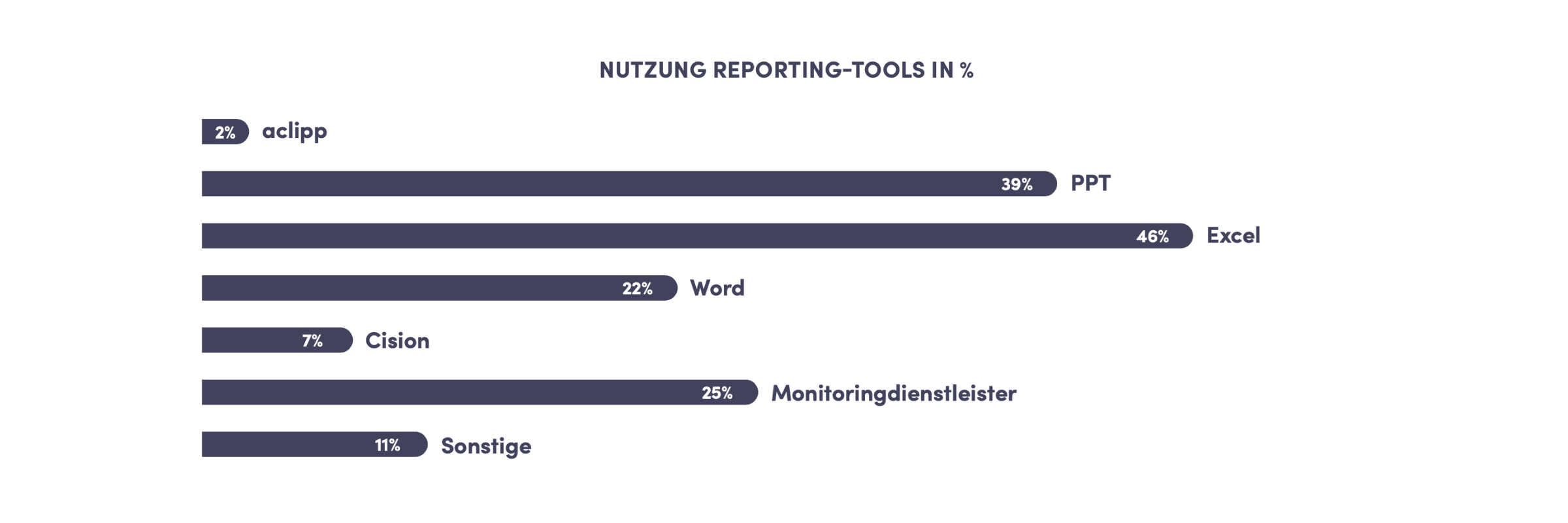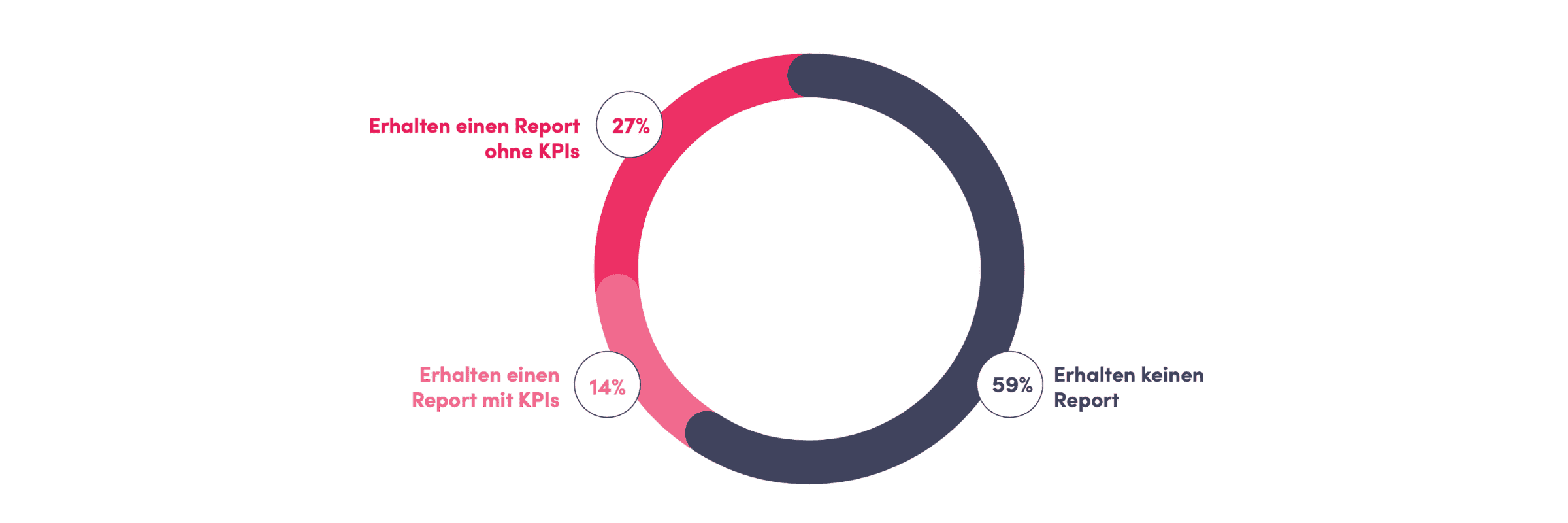
How Do PR Professionals Create Clipping Reports?
To answer this question, we have surveyed over 1000 PR managers from the entire DACH region about their methods. We also conducted numerous interviews with communicators from PR agencies and in-house PR departments.
We found that more than half of the respondents create their clipping reports using PowerPoint, Excel, and Word. This shows that PR reports are still mostly created manually by employees. Only a quarter of the respondents use tools provided by various media monitoring services.

This is one reason why it takes an average of about 4 hours to create a monthly report for just one client. This does not even take into account collecting media observations and researching the associated KPIs. Thus, creating reports for ten clients would take an average of 40 hours, which is the weekly working time of a full-time employee. In-house PR departments take slightly less time, with 3.2 hours on average per monthly report, compared to the PR agencies we surveyed.

This enormous manual and time-consuming effort is why 59% of the companies we surveyed do not receive a report. Instead, this time is invested in truly value-adding work. Not all clients want a report either, as they find it of little use. This is probably also why 44% of PR clients are not satisfied with their PR managers.
In such cases, KPIs are often not sufficiently explained, reducing their significance. Moreover, the content of clipping reports is often not aligned with communication goals, making them irrelevant for their recipients. A report that only lists all the found clippings without KPIs also has little significance. Recipients do not know how successful the campaigns were and whether the PR results align with the set goals. It is no wonder that PR reports often receive little attention.

However, two-thirds of the companies surveyed would like a relevant PR report with highlight clippings and detailed data on PR activities. According to their own statements, they would use such a meaningful report as a basis for strategic communication decisions, performance monitoring, and comparison with competitors. All respondents would be willing to pay additional money for this—on average 15-20% of the retainer per report.

Meaningful PR reports with relevant content can certainly be sold to clients as an additional service. This can also be an additional USP in your service portfolio, significantly setting you apart in pitches. If you can show your clients that you have achieved their PR goals and created a significant impact, they will know their retainer is well invested.

Sarah Amler
Digital Process & Marketing Manager
Sarah was responsible for performance marketing, social media activities and digital onboarding in our software at aclipp.